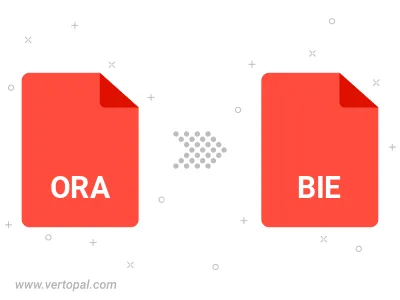Convert ORA to BIE
Convert ORA images to BIE format, edit and optimize images online and free.

The ORA file extension stands for OpenRaster Image File, a format designed for the exchange of layered raster graphics between different software applications. Proposed in 2006 by developers from KDE and Krita, OpenRaster aims to provide an open alternative to proprietary formats like Adobe's PSD. The format encapsulates image layers, blending modes, and metadata within a ZIP archive containing XML and PNG files. Its primary use is to facilitate interoperability among various graphic editors, ensuring that complex image data can be shared and edited across different platforms.
The BIE file extension, associated with the Joint Bi-level Image Experts Group, stands for "Binary Image Entity". This format was developed for efficient compression of binary images, primarily used in fax transmissions. Introduced in 1993, JBIG1 provided lossless compression, outperforming earlier standards like CCITT Group 3 and 4. It was later succeeded by JBIG2, which offered improved compression efficiency for bi-level images.
Start uploading a ORA image by clicking the Choose File button or drag & dropping your ORA file.
Check the file preview quickly and use ORA to BIE tools if you need to change the conversion settings.
After the convert is complete, click on the Download button to get your BIE image.

To change ORA format to BIE, upload your ORA file to proceed to the preview page. Use any available tools if you want to edit and manipulate your ORA file. Click on the convert button and wait for the convert to complete. Download the converted BIE file afterward.
Follow steps below if you have installed Vertopal CLI on your macOS system.
cd to ORA file location or include path to your input file.Follow steps below if you have installed Vertopal CLI on your Windows system.
cd to ORA file location or include path to your input file.Follow steps below if you have installed Vertopal CLI on your Linux system.
cd to ORA file location or include path to your input file.